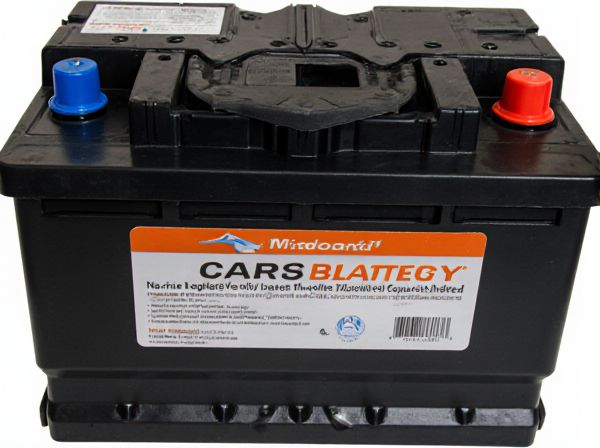
Photo illustration: Valve-Regulated vs Vented
Valve-regulated batteries are sealed and maintenance-free, preventing electrolyte loss and reducing the risk of acid spills, making them ideal for indoor or sensitive electronic applications. Vented batteries feature a valve system that allows gases to escape during charging, requiring regular maintenance and suitable for heavy-duty, high-drain environments. Choosing between these types depends on your specific usage needs, balancing safety, maintenance, and performance requirements.
Table of Comparison
| Feature | Valve-Regulated Battery (VRLA) | Vented Battery |
|---|---|---|
| Design | Sealed, maintenance-free | Open vent, requires regular maintenance |
| Gas Emission | Minimal, recombines hydrogen internally | Emits hydrogen and oxygen gases |
| Maintenance | No water refilling needed | Requires periodic water top-up |
| Installation | Flexible, can be placed in various positions | Must remain upright |
| Durability | Longer cycle life, resistant to vibration | Shorter lifespan, vulnerable to acid spillage |
| Cost | Higher upfront price | Lower initial cost |
| Typical Use | Modern cars, start-stop systems | Older vehicles, heavy-duty applications |
Introduction to Valve-Regulated and Vented Systems
Valve-regulated and vented batteries differ primarily in their construction and maintenance requirements, with valve-regulated batteries featuring sealed designs that control gas release through one-way valves, preventing leakage and minimizing water loss. Vented batteries, also known as flooded or wet cell batteries, have removable caps allowing gases to escape freely, necessitating regular electrolyte level checks and refilling. Understanding these fundamental differences helps in selecting the appropriate battery type for applications requiring specific maintenance levels and operational safety.
Key Differences Between Valve-Regulated and Vented Designs
Valve-regulated batteries use a sealed design with a pressure relief valve to release internal gases, preventing leakage and reducing maintenance requirements, while vented batteries feature an open design that allows gases to escape freely, necessitating regular electrolyte checks and refilling. Valve-regulated models typically offer enhanced safety and longer service life due to controlled gas recombination, whereas vented batteries excel in high-discharge applications but require more frequent maintenance. The choice between valve-regulated and vented batteries depends on factors such as application demands, maintenance capacity, and safety priorities.
How Valve-Regulated Systems Work
Valve-regulated lead-acid (VRLA) batteries utilize a pressure relief valve to maintain internal gas pressure and recombine gases generated during charging, preventing electrolyte loss and reducing maintenance. The valve opens only when internal pressure exceeds a set threshold, ensuring safe venting and preserving battery performance. This design allows sealed operation, enhancing safety and reliability compared to vented flooded batteries that require regular electrolyte refilling.
Understanding Vented System Operation
Vented battery systems operate by allowing gases produced during charging to escape through vents, preventing pressure build-up and reducing the risk of explosion. This design requires regular maintenance to monitor electrolyte levels and ensure proper ventilation. Understanding vented system operation is crucial for applications needing constant performance under varying temperature and load conditions, where gas recombination cannot be fully controlled.
Advantages of Valve-Regulated Units
Valve-regulated lead-acid (VRLA) batteries offer superior maintenance-free operation by preventing electrolyte leakage through their sealed design, ensuring enhanced safety and reliability. Their valve mechanism controls internal gas pressure efficiently, reducing the risk of explosion and allowing flexible installation orientations compared to vented batteries. VRLA units also provide better resistance to vibration and lower self-discharge rates, resulting in longer service life and improved performance in backup power and critical applications.
Benefits of Vented Systems
Vented battery systems offer superior heat dissipation, reducing the risk of thermal runaway and improving safety during high-load applications. They allow easier maintenance by enabling the release of gases formed during charging, which prevents pressure build-up and extends battery lifespan. This design is particularly advantageous in industrial and automotive settings where consistent performance and reliability are critical.
Common Applications for Valve-Regulated Systems
Valve-regulated lead-acid (VRLA) batteries are commonly used in uninterruptible power supplies (UPS), telecommunications, and emergency lighting systems due to their maintenance-free operation and sealed design. These batteries are ideal for environments requiring reliable, spill-proof power sources with minimal ventilation. Unlike vented batteries that release gases during charging, VRLA systems safely recombine gases internally, making them suitable for indoor applications and confined spaces.
Typical Uses of Vented Systems
Vented systems, commonly used in automotive and marine applications, excel in scenarios where continuous gas venting prevents pressure buildup, ensuring safety and longevity. Typically employed in industrial machinery and backup power supplies, vented batteries handle high discharge rates and demanding environments effectively. These systems are ideal for maintenance-friendly setups requiring regular inspection and electrolyte refilling.
Safety Considerations: Valve-Regulated vs Vented
Valve-regulated batteries incorporate a pressure relief valve that controls gas release, preventing explosion risks and ensuring safer operation under high pressure. Vented batteries rely on open vents to release gas, which increases the risk of hazardous gas exposure and requires proper ventilation to avoid safety hazards. Proper selection between valve-regulated and vented batteries depends on the specific application's safety requirements and environmental controls.
Choosing the Right System: Valve-Regulated or Vented
Valve-regulated batteries offer a sealed design with controlled gas release, ensuring low maintenance and enhanced safety, making them ideal for indoor applications and sensitive electronics. Vented batteries provide superior gas dissipation and can handle higher charge rates, suitable for heavy-duty use and environments where electrolyte maintenance is manageable. Selecting the right system depends on application requirements, balancing maintenance preferences, safety standards, and performance demands.
 caratoz.com
caratoz.com